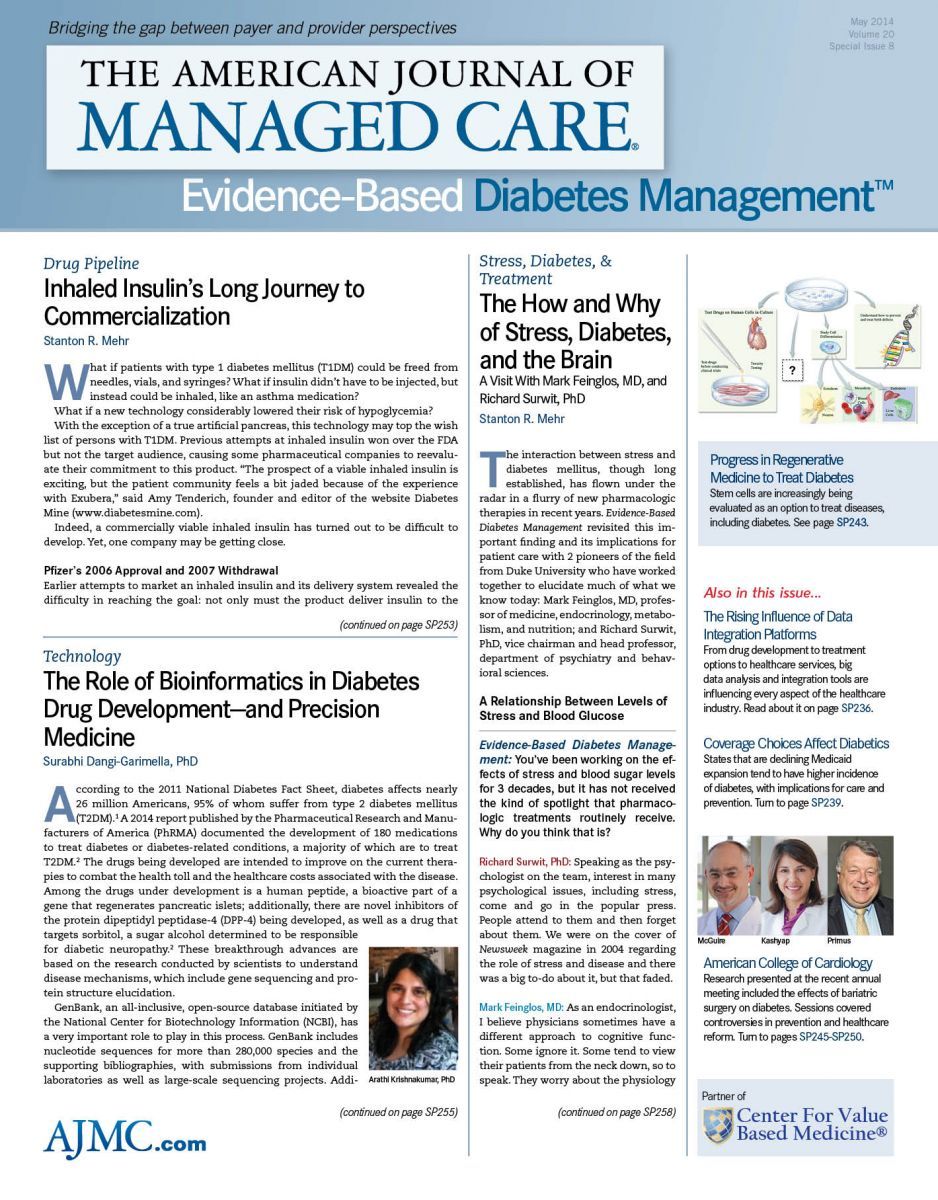- Center on Health Equity & Access
- Clinical
- Health Care Cost
- Health Care Delivery
- Insurance
- Policy
- Technology
- Value-Based Care
Use of Rivaroxaban Could Trim Hospital Spending in Treating Pulmonary Embolism
American College of Cardiology 2014
The “triple aim” promised by healthcare reform—better-quality care, greater patient satisfaction, at a lower cost—will play out procedure by procedure as physicians find ways to deliver better care and find savings. One such intervention is treatment for pulmonary embolism (PE), a dangerous condition that often involves a multiday stay in the hospital. A 2013 study that tracked 991 patients at Brigham and Women’s Hospital in Boston found a mean stay of 4 days and a mean cost per patient of $8764 for PE treatment.1
Thus, a method that would trim those stays in half would explain the title of a presentation by Mohsen Sharifi, MD, at the 63rd Scientific Sessions of the American College of Cardiology (ACC) held March 29-31 in Washington, DC: “Paradigm Shift in the Treatment of Pulmonary Embolism: Safe Dose Thrombolysis Plus Rivaroxaban.”
Sharifi, who practices at the Arizona Cardiovascular & Vein Clinic in Mesa, Arizona, offered a different approach to thrombolysis, which simply means treating PE with drugs to break up a blood clot. The “safe dose” approach involves an initial infusion of heparin followed by daily doses of the new oral anticoagulant rivaroxaban, which Sharifi said could trim the typical hospital stay to an average of 1.8 days for moderate or severe PE.
In his March 30, 2014, presentation, and in an accompanying abstract, Sharifi summed up the approach as “drip, dose, and discharge.”2 Findings on this approach were previously published in Clinical Cardiology.3
This method represents a “middle ground” to other treatment approaches that have seen results released over the past 2 years, Sharifi said. These include heparin-plus-tenecteplase, which was found to present some risk stratification challenges in the PEITHO trial.4
The use of EKOS ultrasound technology5 to speed up the effects of thrombolysis was found to be effective in the ULTIMA trial, but Sharifi said the involvement of devices can drive up costs.
The results have important implications not only for the goal of keeping patients out of the hospital, but also for formulary managers. Sharifi reported his best results for patients who stayed on rivaroxaban, while a few patients who switched to warfarin for insurance reasons suffered setbacks.
Results presented at ACC involved 119 patients who were treated over a 15-month period; 101 patients had moderate and 18 had severe PE. Patients received 10 mg of tissue plasminogen activator (tPA) given as a bolus, followed by a 40-mg infusion given in 2 hours. Heparin was then infused over the next 24 hours, and rivaroxaban was started in 15-mg or 20-mg doses 2 hours after the end of heparin dosing. Oral anticoagulants continued for 30 days, with 22 patients switching from rivaroxaban to warfarin, chiefly due to cost issues.
After a mean follow-up of 14 months, no bleeding occurred in any patients on the safe-dose thrombolysis. The abstract reads, “Recurrent venous thromboembolism occurred in 3 patients who were on warfarin but in no patients who were on rivaroxaban.” At the session, Sharifi said that based on these results he saw “little role for warfarin” in this type of therapy. The best part is,
EBDM
References
1. Fanikos J, Rao A, Seger AC, Carter D, Piazza G, Goldhaber SZ. Hospital costs of acute pulmonary embolism. Am J Med. 2013;126(2):127-132.
2. Sharifi M, Freeman W, Bay C, et al. Paradigm shift in the treatment of pulmonary embolism: safe dose thrombolysis plus rivaroxaban. JACC. 2014;64(12, suppl A):Abstract 916-07.
3. Sharifi M, Bay C, Shwartz F, Skrocki L, Safedose thrombolysis plus rivaroxaban for moderate and severe pulmonary embolism: drip, drug, and discharge. Clin Cardiol. 2014;37(2):78-82.
4. Nainggolan L. PEITHO: persuasive for thrombolysis in PE? Medscape Multispecialty. http://www.medscape.com/viewarticle/780651#2. Published March 12, 2013. Accessed March 30, 2014.
5. Ultima trial results published in Circulation. Vascular News. http://www.cxvascular.com/vn-venous-news/vascular-news---venous-news/ultima-trial-results-published-in-circulation/. Published January 20, 2014. Accessed March 30, 2014.
“Patients go home in 2 days,” Sharifi said. “That’s very appealing in today’s healthcare environment.”

Trends in Hospital Pricing for Vulnerable Emergency Department Users, 2021-2023
December 4th 2025Self-pay emergency department prices rose significantly from 2021 to 2023, especially at for-profit and system-affiliated hospitals, highlighting growing affordability challenges for uninsured and underinsured patients.
Read More
Exploring Pharmaceutical Innovations, Trust, and Access With CVS Health's CMO
July 11th 2024On this episode of Managed Care Cast, we're talking with the chief medical officer of CVS Health about recent pharmaceutical innovations, patient-provider relationships, and strategies to reduce drug costs.
Listen
Integrated Care for Chronic Conditions: A Randomized Care Management Trial
December 3rd 2025The authors sought to understand the differential impact of payer-led community-based care management approaches on stakeholder-oriented outcomes for publicly insured adults with multiple chronic conditions.
Read More

